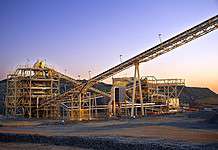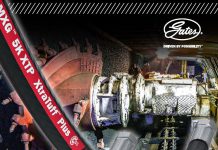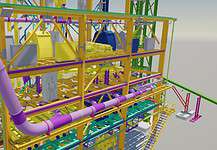A diesel particulate filter (DPF) is part of a modern diesel engine’s exhaust system and is designed to trap dangerous and toxic metal particles before the enter the atmosphere and human lungs in the vicinity.
Diesel particulates are associated with a number of serious health conditions and diesel engine manufacturers are required to contain and eliminate those particles in the interests of worker safety and environmental responsibility.
Inside the housing of the filter is a substrate comprising thousands of tiny cells that allow exhaust gases to pass through them but trap the diesel particulate matter. At various stages of the driving cycle, the on-board computer initiates a regeneration sequence that increases the temperature inside the DPF to 600°C, which converts the diesel particulates to ash.
This non-toxic ash is then small enough to pass through the wall of the filter and out the exhaust system.
These DPFs work well – until they don’t! Under certain operating conditions and if other engine faults occur, they can become blocked – choking the exhaust system and significantly decreasing engine power and efficiency, while simultaneously sending diesel consumption skyward.
Faults and Failures
DPF Regen is a well established company in Sydney set up to clean, repair and diagnose faults arising with and surrounding DPFs in everything from light vehicles to the largest mining equipment.
The AMR interviewed DPF Regen’s founder and CEO, Frank Spiteri, to shed some light on this very topical issue. Frank has decades of experience with diesel diagnostics and says that the DPF Regen business grew out of necessity from diagnosing and repairing numerous upstream faults that resulted in blocked DPFs.
“Particulate filters block for a number of reasons, most of which stem from upstream issues that corrupt the combustion process and lead to over-rich fuel mixtures that clog the intake, EGR and exhaust systems,” Frank explained.
“You can’t just look at the DPF blockage in isolation, it takes time and knowledge to look at what caused the fouling or damage and repair the original source of the problem or else the filter might block again in a very short period of time.”
One of the most common causes of DPF clogging is a split intercooler pipe or another leak in the intake system of a turbocharged diesel. An undetected split will often only be visible under boost. In operation, the escaping intake air does not find its way into the cylinder to match the fuel injected by the ECU.
This results in an overly rich mixture which quickly carbons up the exhaust system, EGR valve and the intake manifold. The DPF does not fare well either.
Frank can examine the quantity, texture and colour of the soot in the DPF and determine the upstream culprit in most cases. By alerting the vehicle’s maintenance staff about the problem, they can look for and repair what may seem like an unrelated failure and ultimately save their operation tens of thousands of dollars in repeated unscheduled downtime.
It is not just air leaks that cause DPF clogging. Over time, intake manifolds become blocked as do the Exhaust Gas Recirculation (EGR) valves that divert soot-laden gases back into the engine as part of their emission control cycle. Eventually the walls of the valve and the intake manifold runners build p with choking carbon that inhibits the flow of air into each cylinder.
Once again, the ECU cannot measure or counteract this loss of air flow, so it continues to deliver what it calculates to be the correct mass of fuel to each cylinder. However, because the air flow is reduced, an over-rich mixture is created that leads to DPF blockages.
It is therefore essential to regularly inspect and clean not only the DPF but also the intake manifold and EGR valve to ensure they are not responsible for rapid re-blocking of the filter.
Another cause of DPF blockage is stop/start driving. Most manufacturers rely on a period of sustained highway (higher speed) driving in order for the ECU to trigger a regen cycle to clean the DPF. If a vehicle is constantly stopping, starting and operating at low speeds (ie: in town or the CBD) the ECU may never see the correct conditions to initiate the regen, hence the DPF will begin to block and need cleaning more regularly.
Inspection and Cleaning
According to Frank, the first step in any cleaning process is visual inspection. As mentioned, the state of the DPF’s substrate and the type and quantity of trapped soot can give he and his technicians a very clear picture of why the filter is blocked in the first place.
It is also important to inspect the diesel oxidation catalyst (DOC) which sits inline before the DPF in the exhaust system. This is similar to a CAT for a petrol engine and also helps to reduce the number of particles in the exhaust, before they reach the DPF filter. In most cases, the DOC can be cleaned and restored to full functionality, just like a DPF.
In extreme instances, they DPF can become so blocked that only a small path remains for normal exhaust gas flow. As all the exhaust is passing through a much-reduced aperture, the associated heat in that area builds rapidly. At 1200°C the DPF substrate itself starts to melt and once this occurs it is time to replace the unit as it is damaged beyond cleaning or repair.
Allowing a DPF to go uncleaned to the point were temperatures soar to this level can result in catastrophic damage to the entire vehicle from resultant exhaust rupture and fire. Factory exhaust components are not built to withstand 1200°C.
The cleaning process varies subtly for each application. DPF Regen use a range of two-part, biodegradable solutions and a specially designed ultrasonic cleaner to break down the carbon and flush intakes, EGR valves, DOCs and DPFs clean – restoring their original flow. Each solution is designed to tackle a different application and each works at a particular sweet spot of temperature and vibration frequency for optimum cleaning.
Training Centre
Due to the enormous cost of vehicle and machine downtime, Frank recognised that the industry could benefit from education in this area. Diesel mechanics needed to know how to correctly diagnose the cause of the faults they were seeing, so that the original issue could be repaired once and correctly.
This process of correcting upstream issues ensures the DOCs and DPFs do not become blocked prematurely, leading to costly unscheduled downtime. To that end, DPF Regen also have a training centre for mining staff and other technicians to learn more about diagnosing and fixing engine faults – despite what the scan tool might tell them. Courses are available for all diesel technicians.
The moral of the story is simple: keep diesel particulate filters clean in the interest of worker health and safety, machine uptime, cost minimisation and to prevent total asset loss by fire. The best way to do that is speak to an expert in the field.
More information:
DPF Regen
02 9774 4142
[email protected]
www.dpfregen.com.au


























